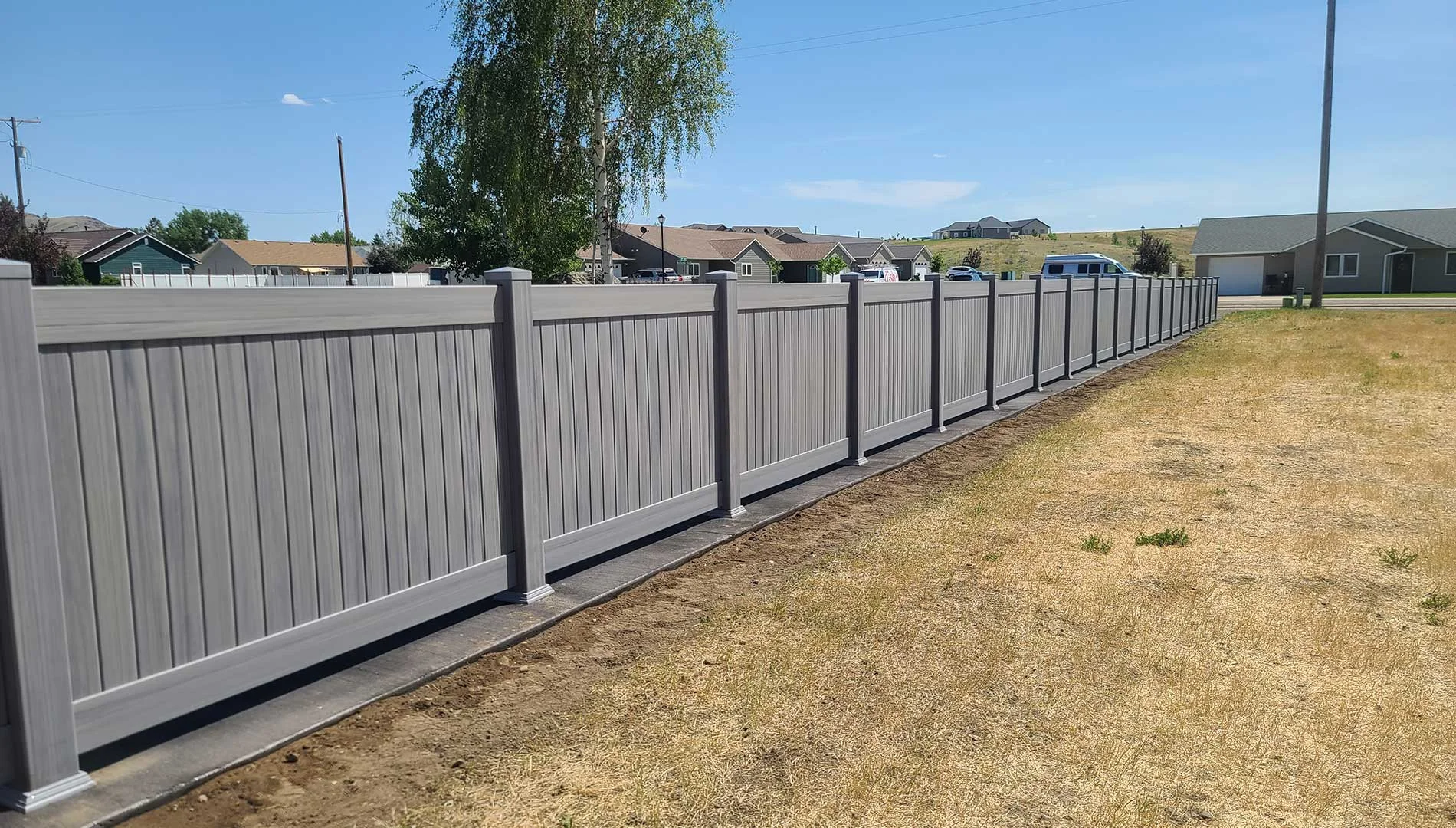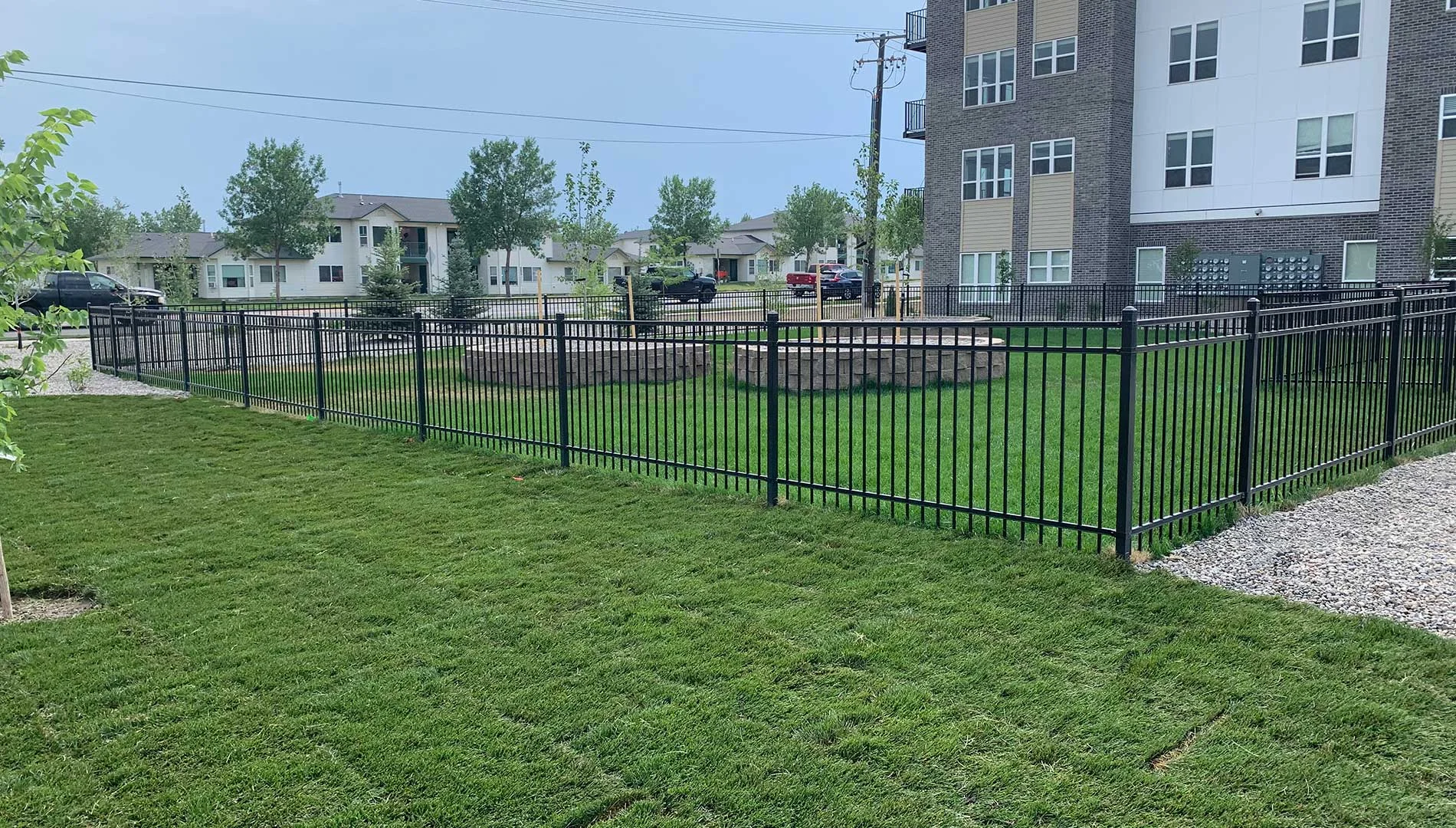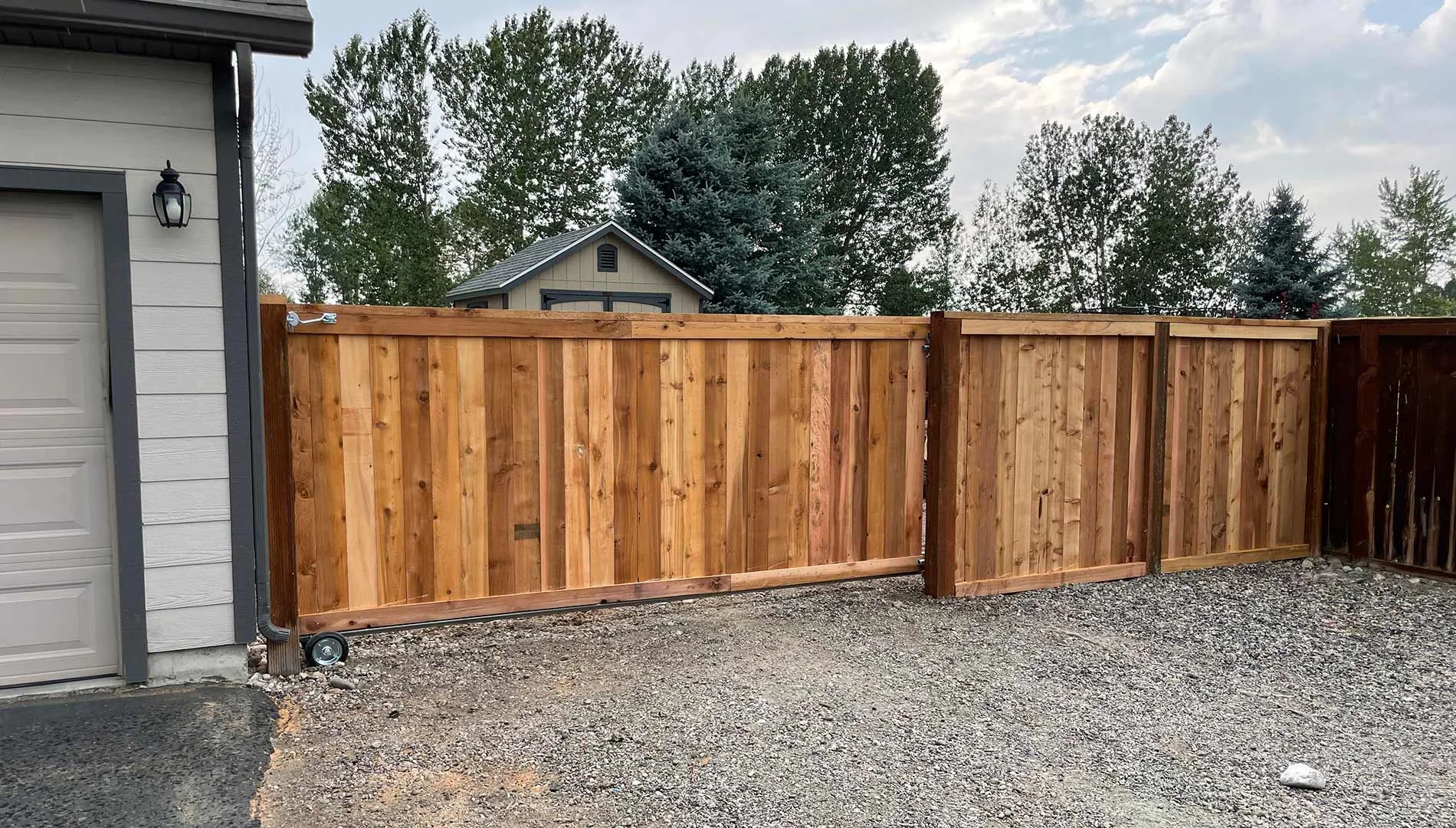Fence Maintenance Tips
OUR RESOURCES
Check out our news on Maintenance Tips, DIY, and Frequently Asked Questions
Fencing is crucial for practical farm and ranch operations. An excellent addition to your business and way of life is a strong, long-lasting fence that can tolerate inclement weather, wildlife, and cattle. To maximize your investment, Montana Fence provides a range of fencing solutions catered to the requirements of nearby farmers and ranchers. Choosing the finest fence can be difficult, so we’ve included the best kinds of fences for ranches along with their characteristics to help you decide.

4 Best Fence Materials to Use on Your Ranch
Barbed Wire
Farmers and ranchers in Montana often choose barbed wire fencing. It is inexpensive, simple to install, and requires little building and planning. Barbed wire is well renowned for its effectiveness because of its twisted wire construction with strategically placed barbs every 5 to 6 inches. Protecting your cattle is highly important. This material is still a best-seller in our store since it is reasonably priced, flexible, and durable in severe environments.
High Tensile Smooth Wire
An alternative to traditional barbless barbed wire is high-tensile smooth wire. The wire’s robust high-carbon steel core allows it to stretch across large areas without losing its resilience. Compared to other materials, this affordable material enables the fencing of big areas with less wire. For securing horses and cattle and keeping trespassers out, high-tension smooth wire works wonders, especially when used across expansive areas of property.
Non-Climb Horse Fence
Non-climb horse fencing, used by smaller farmers and ranch owners, has a 2″ x 4″ rectangular wire pattern and is frequently supported by horizontal or wooden beams. This wire fence is resistant to rot and rarely needs to be replaced, making it perfect for smaller pastures, including horses, goats, lambs, or other similar animals. The unique design of non-climb horse fencing keeps horses from stepping through or getting tangled, lowering the possibility of accidents. It also provides an improved defense against other animals and predators.
Treated Wood
Treated wood post and rail fencing is another popular choice among ranchers, combining aesthetics with functionality. The treatment method extends the wood’s lifespan even under Montana’s harsh weather conditions by making it resistant to rot and pests. Because of its attractive look, treated wood is preferred for fields or pastures near residences. Wood post installation is more costly than installing posts made of other materials, such as T-posts. We would be pleased to discuss these aspects and offer a free estimate.
Let Us Make Your Decision Easy
With this knowledge, you can choose the right fence for your ranch. At Montana Fence, we understand the importance of choosing the appropriate fencing material for productive farming and ranching. Our group is here to facilitate and ease the decision-making process. Don’t hesitate to contact us by phone or online to discuss the cost, durability, and suitability of materials for your Montana ranch.

Guide to Fence Maintenance for Every Fence Material
MONTANA FENCE RESOURCES
We have emphasized repeatedly that fencing is essential for the safety, aesthetics, and functionality of your home and yard. But we have yet to talk about how important it is to maintain fences after they are installed and the best ways to do that. Maintaining your fence regularly will save long-term maintenance costs, prolong its longevity, and prevent the annoyance of repairs. Fences in Montana have particular obstacles because of the state’s severe climate, animals, and other considerations. At Montana Fence, we strive to increase the value of your fence by providing yearly inspections and periodic maintenance to ward against problems like rust, corrosion, and wood rot. To prolong the lifespan and preserve the aesthetic appeal of your fence, our team has put together an extensive guide on how to maintain various kinds of fencing materials.
Guide to Fence Maintenance for Every Material
Every type of fencing has a different purpose, is made for a particular climate, and requires a different kind of upkeep. Low-maintenance materials such as decorative iron and chain links are recommended for more crowded towns like Billings, Bozeman, Great Falls, and Kalispell. Because of its endurance, wood fencing is perfect for Montana’s more rural and smaller cities, like Three Forks, Shepard, and Big Fork. However, it might need more regular color care. Vinyl fencing is an excellent choice for both urban and rural settings since it is easy to install, long-lasting, and clean. To guarantee durability and aesthetic appeal, we’ve included comprehensive care guidelines for each type of fencing material below.
Garden, Farm & Ranch Fence
Materials for garden, farm, and ranch fencing include high tensile smooth wire, horse fence, barb wire, and more. These materials are made to withstand inclement weather, wildlife, and livestock. The following general upkeep advice is provided:
Maintenance Tips:
- Annual Inspections: Inspections regularly are essential. As you stroll along the fence line, look for bent or broken posts, loose or broken wires, stable bracing, and functional gates. Annual inspections aid in the early detection of needed repairs.
- Prompt Repairs: Any problems, such as a fallen cable, a broken board, or wood rot, should be fixed immediately. Repairs done on time keep minor concerns from becoming bigger ones.
Wood
Wood fencing is cost-efficient, versatile, and environmentally friendly. It rots quickly and may need to be stained again every few years, but given Montana’s environment, it holds up well. Here are some pointers for maintenance:
Maintenance Tips:
- Avoid Water Exposure: Keep sprinklers and other water sources away from the fence to stop decay and fading.
- Regular Cleaning: Every two to three years, clean your fence to get rid of dirt and debris. You can use an oxygenated bleach, power washer, or wire brush.
- Timely Repairs: Deal with minor problems as soon as possible to keep them from growing into more significant, expensive ones.
Vinyl
Vinyl fences are renowned for being strong, flexible, and low-maintenance. They are perfect for enduring Montana’s winter and spring weather and come in various designs and colors.
Maintenance Tips:
- Routine Cleaning: Give it regular spraying to keep your vinyl fence clean and avoid accumulation.
- Simple Cleaning Solutions: Use soapy water or Simple Green Spray for cleaning. You can get rid of scratches with Soft Scrub.
- Immediate Repairs: Address problems such as loose pickets promptly to save additional harm, particularly in severe weather.
Ornamental Iron
In addition to being strong, long-lasting, and secure, ornamental iron fencing requires little upkeep.
Maintenance Tips:
- Prompt Repairs: Take care of little repairs immediately to extend the fence’s lifespan. For scratches, use the manufacturer’s black acrylic paint.
Chain Link
Chain link fencing provides excellent visibility and security and is affordable, long-lasting, and low maintenance.
Maintenance Tips:
- Regular Cleaning: To keep your fence looking nice, give it a weekly spray, especially in the summer.
- Prevent Plant Growth: Trees, flowers, and vines that can push out links and harm the fence should be removed.
Let Our Montana Fencing Professionals Assist You
At Montana Fence, we prioritize fence maintenance because we know it extends the lifespan and value of your investment. Our team of skilled professionals can advise and assist with repairs for any fence material. We work to make being a homeowner easier by making sure that having a fence is never a hassle. For any inquiries or to discuss your fence’s upkeep or repair needs, contact us.

Optimal Timing for Staining Your Fence
Montana Fence Resources
As a homeowner, it’s your responsibility to provide your wood fence with the necessary maintenance. This begins with applying a premium stain and/or sealer to maintain its longevity. Wood’s natural porosity impacts how well stains absorb and how long stains last. With your care and attention, your wood fence can last for decades, adding both practical and visual value to your home.
Initial Staining:
Freshly milled wood is still being prepared for staining. The sawing and sanding steps of the milling process compress the wood fibers and seal the pores, significantly reducing the absorption of stains. It is important to let the wood completely dry up and reopen its pores before staining. This usually takes a complete season; for instance, if you erect your fence in the spring, you should stain it in the autumn.
You can speed up this drying process by repeatedly pressure washing the wood, letting it dry completely, then repeating the procedure. Applying water evenly is crucial; the best time to do so is on a warm day to hasten the drying process. (Tip: To prevent uneven weathering and sprinkler rings on your fence, adjust the spray heads). After the wood has had enough time to dry, add the stain of your choice. This meticulous preparation guarantees that the stain provides long-lasting protection and penetrates deeply.
Ongoing Care and Maintenance:
A high-quality stain can preserve a fence’s appearance and structural integrity for many years. Use the water bead test to see if your fence needs to be refinished by sprinkling a tiny section of the wood with water. If the wood absorbs the water, it’s time to re-stain. Even though the color has faded, the sealant component is still effective if the water beads up or flows off the surface.
It is crucial to prepare the surface before reapplying the stain adequately. Pressure wash the wood to remove old stains, grime, and debris. In some circumstances, a specialist cleaner may be required to remove the prior stain. After the wood has been thoroughly cleaned and allowed to dry, you can dye it again. This procedure strengthens the fence’s resistance to the weather while also revitalizing its appearance.
Get Your Free Estimate
We offer free estimates at all of our locations. Get in touch to schedule a time that works best for you! We’ll walk the fence line, talk about your project, and get you an accurate quote for your next fence installation.
